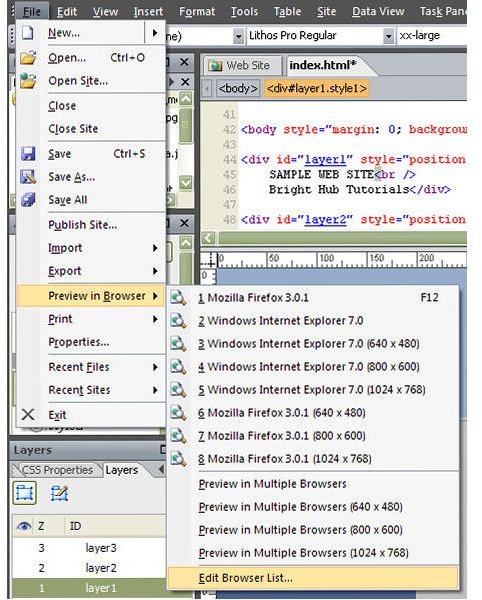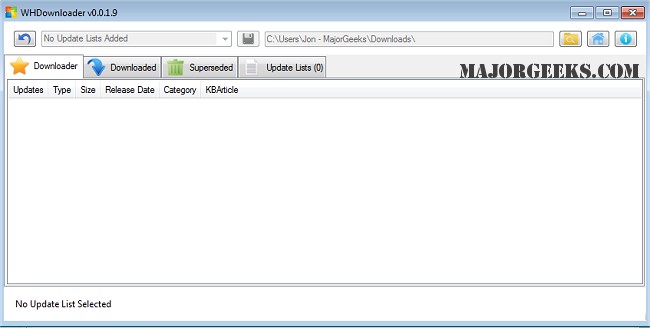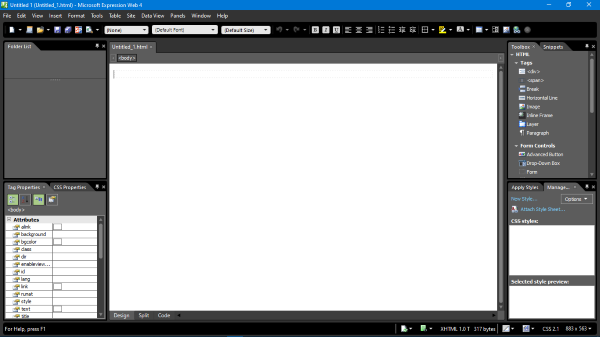
- #ADDINT BROWSERS TO MICROSOFT WEB EXPRESSION 4 HOW TO#
- #ADDINT BROWSERS TO MICROSOFT WEB EXPRESSION 4 FULL#
It also has an AND condition that checks whether the RangeEnd parameter is not null, which should always be true.

It filters the rows in the table: it will return all the rows in the table if the RangeStart parameter returns yesterday’s date, otherwise it will return no rows at all. The #”Filtered Rows” step is extremely important.As the name suggests, this column shows when the data in any particular row was loaded.

 The #”Added Custom” step adds a new column to the table called “UTC Data Load Date” containing the value returned by the CurrentDateTime step. The PreviousDay step gets yesterday’s date by extracting the date from the value found in the CurrentDateTime step and subtracting one day. If you use DateTimeZone.UtcNow you may get a different date time returned every time the function is called within the query, which can make things very confusing. It’s important to note that I’ve used the DateTimeZone.FixedUtcNow function – this not only gives you the current UTC date and time, but it’s guaranteed to give you the same date and time every time you call it within a query. The CurrentDateTime step gets the current date and time at the point when the dataset refreshes. Date( RangeStart) = PreviousDay and RangeEnd null)Īs I said, the first couple of steps aren’t interesting – they just connect to the RSS feed to get the list of top stories as a table. SelectRows( # "Changed Type3", each DateTime. b) RangeEnd is not null ( which should never be true) a) The RangeStart parameter equals yesterday ' s date, and Add the filter required for incremental refresh Connect to the BBC News Top Stories RSS feed Next you need a Power Query query to load the news stories. Power BI expects them to be used to filter the rows loaded into a table it also uses them to partition these tables in the dataset.
The #”Added Custom” step adds a new column to the table called “UTC Data Load Date” containing the value returned by the CurrentDateTime step. The PreviousDay step gets yesterday’s date by extracting the date from the value found in the CurrentDateTime step and subtracting one day. If you use DateTimeZone.UtcNow you may get a different date time returned every time the function is called within the query, which can make things very confusing. It’s important to note that I’ve used the DateTimeZone.FixedUtcNow function – this not only gives you the current UTC date and time, but it’s guaranteed to give you the same date and time every time you call it within a query. The CurrentDateTime step gets the current date and time at the point when the dataset refreshes. Date( RangeStart) = PreviousDay and RangeEnd null)Īs I said, the first couple of steps aren’t interesting – they just connect to the RSS feed to get the list of top stories as a table. SelectRows( # "Changed Type3", each DateTime. b) RangeEnd is not null ( which should never be true) a) The RangeStart parameter equals yesterday ' s date, and Add the filter required for incremental refresh Connect to the BBC News Top Stories RSS feed Next you need a Power Query query to load the news stories. Power BI expects them to be used to filter the rows loaded into a table it also uses them to partition these tables in the dataset. #ADDINT BROWSERS TO MICROSOFT WEB EXPRESSION 4 HOW TO#
More details about how to create them can be found in the docs here. Instead I’m going to show you how to use incremental refresh to store a copy of this list of top stories every day in the same table in a dataset.įirst of all, for incremental refresh to work two Power Query parameters of data type date time need to be created called RangeStart and RangeEnd. RSS is based on XML and there’s no authentication needed to access this feed, so loading a table of these top stories into Power BI is very easy – so easy, I’m not going to bother explaining how to do it. If it isn’t possible to do this, or you’re too lazy or you’re just curious to see how my technique works, read on.įor the example I’m going to show in this post I’m going to use a web-based data source, an RSS feed from the BBC News website that returns a list of the current top stores on the site.
#ADDINT BROWSERS TO MICROSOFT WEB EXPRESSION 4 FULL#
This will allow you to do a full refresh of the data in your dataset at any point in the future if you need to, or create a completely new dataset, even though it means you have to do a lot of extra work. If possible, you should stage a copy of each day’s data in a relational database (ie build that data warehouse) or even as text files in a folder (Power Automate may be useful to do this) and use that staged copy as the data source for Power BI. Let me be clear though: in all these cases I recommend that you don’t use the technique I’m going to show you. The current Power BI incremental refresh functionality doesn’t make it easy to do either of these things, and that’s why I’ve written this post.
Take a snapshot of a data source, like an Excel workbook, that is changing all the time and store each of these daily snapshots of the contents of the workbook in a Power BI dataset. Connect to a data source that only gives you a set of new sales transactions each day, and add these sales transactions to the ones you have already stored in a Power BI dataset. I know what you’re thinking at this point: isn’t this what incremental refresh is meant to do anyway? Well, yes it is, but as I said it’s designed to work in scenarios where a relational data warehouse stores a copy of all the data that’s in your dataset and in some cases you don’t have that luxury. In this post I’m going to show you how to use incremental refresh to solve another very common problem – namely how to get Power BI to keep the data that’s already in your dataset and add new data to it. It’s designed for scenarios where you have a data warehouse running on a relational database but with a little thought you can make it do all kinds of other interesting things Miguel Escobar’s recent blog post on how to use incremental refresh for files in a folder is a great example of this. 
Power BI incremental refresh is a very powerful feature and now it’s available in Shared capacity (not just Premium) everyone can use it.








 0 kommentar(er)
0 kommentar(er)
